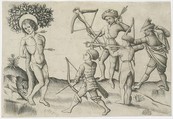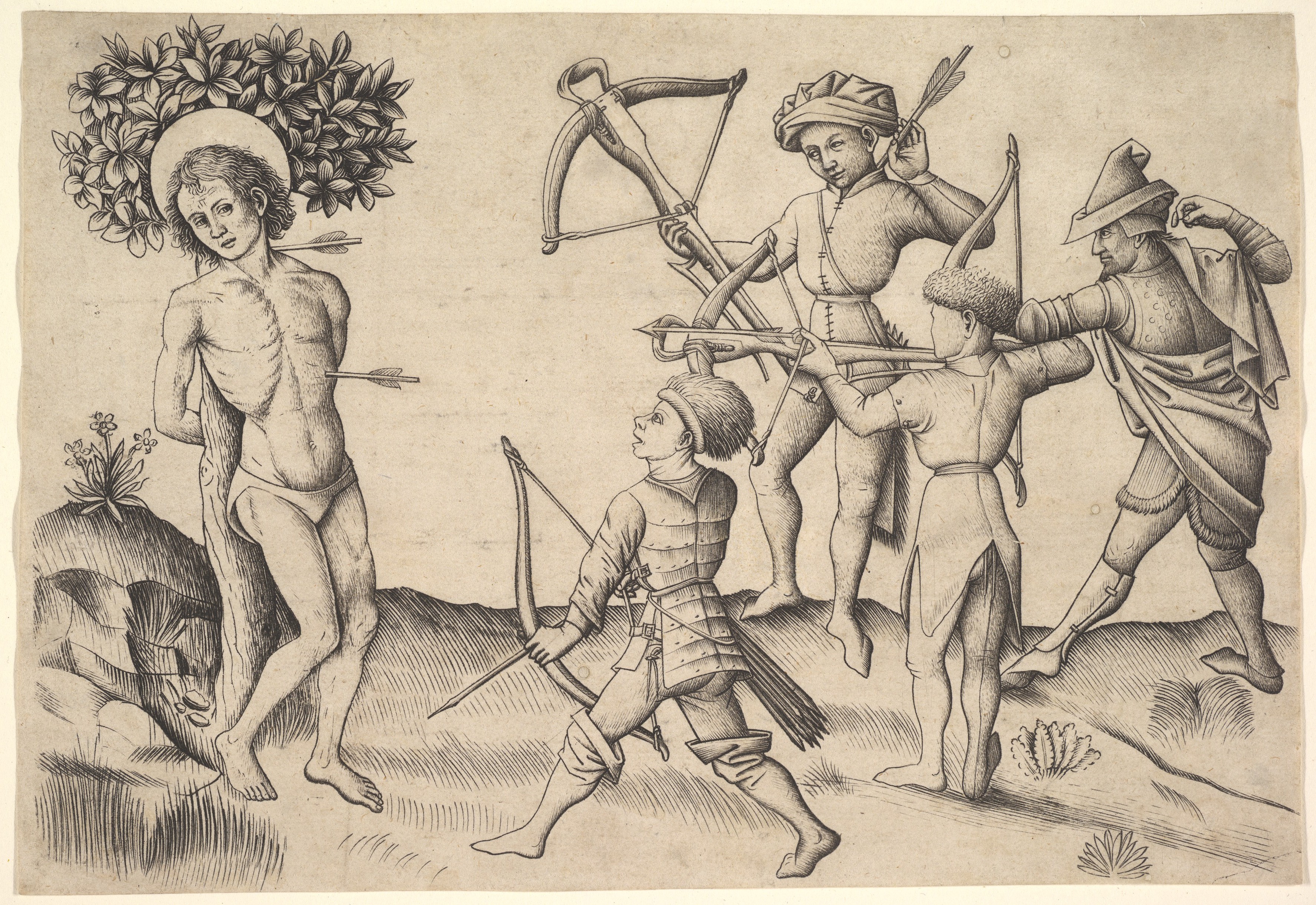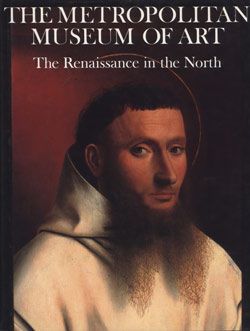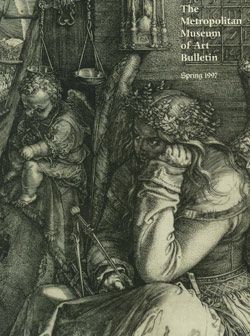Saint Sebastian
attributed to Master of the Playing Cards German
Not on view
Only two early impressions of this print are known. Its technique, consisting of strongly outlined forms modeled with light evenly traced parallel strokes, approaches that employed in drawings of this period. The print has traditionally been assigned to the Master of the Playing Cards, an artist probably active in Alsace, though the rather unstable poses and the muddled formation of the small hill on the left have led some scholars to question the attribution. The overall polished technique and details such as the naturalistic rendering of the saint's chest suggest that the engraver, if not the master himself, was certainly an accomplished artist closely familiar with his work. As in the Master's more securly attributed prints, the technique approaches that found in contemporary drawings--strongly outlined forms modeled with extremely fine parallel strokes. These thin, sharp, and slightly fuzzy lines were probably created with a drypoint stylus rather than a burin, the tool more typically associated with engraving, which produces slightly broader and more tapered lines. Saint Sebastian, a frequent subject of prints from this period, was regarded as one of the main guardian saints against the plague.
Due to rights restrictions, this image cannot be enlarged, viewed at full screen, or downloaded.
This artwork is meant to be viewed from right to left. Scroll left to view more.






